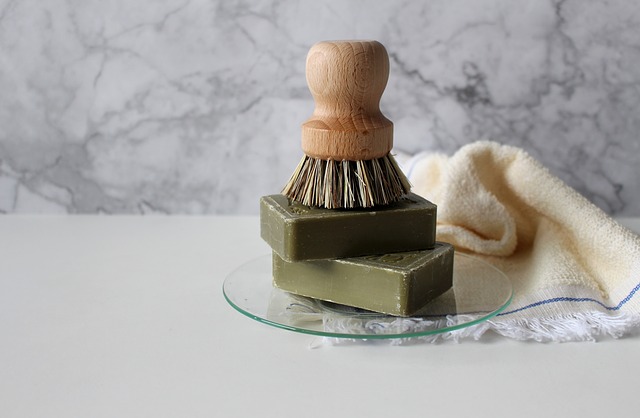
By: Catherine Daleo
Read Time: Est. 25 minutes (in full) – or just skim for ideas!
The plastic crisis may be daunting, but it doesn’t have to be. There are many small actions that we all can take to adopt more personal responsibility to combat the issue while also advocating for corporate responsibility. So while you’re reaching out to businesses to make changes at a corporate level, you can also be proactive in response to the issue starting in your own home!
I recently spoke with someone about the plastic crisis, and how recycling is not the answer (as most of our recycling is NOT being recycled!). She asked me, “isn’t it really hard to combat the issue?” I told her it both is and isn’t.
It’s hard because we are creatures of habit, and making changes is often difficult for many people, especially when change needs to come in large amounts. But, it is also not hard, if you’re willing to try new things and to make a change in your habits, as well as be willing to search for new ways to change your lifestyle to make a difference.
So, if you’re ready to take that step forward, read on, as I discuss the many, many ways in which we can all make a difference in response to the plastic crisis!
Plus, since plastic is made from refined oil, if you want to stick it to the oil companies, stopping our plastic use really hurts their bottom line. Which is why they avidly fight plastic bans all over the country and the world.
Please keep in mind that I am not expecting or asking everyone to make every single one of these switches. It would be amazing if you did, but ideally, if everyone picked just a couple of these alternatives, it would have a significant impact. So, see if any of these suggestions work for you and your family!
This topic will be split into a three-part series, to compensate for the length and to not completely overload you with information. This first part will cover ways to go plastic-free with your beauty and health-related products, the second part will cover changes to adopt elsewhere in your homes such as cooking and cleaning, and the third part will be various ways to do so out and about in the world while shopping or patroning.
The first category will also be the longest category of this series and is thus perhaps one of the most essential sections to cover based on the quantification of potential impact. This is because the following suggestions are likely to be used by an entire family unit, rather than just an individual person. This, of course, is in no way saying that any of the other categories are less important. Every item that is listed has ever-increasing potential of making a difference, and that potential grows when more people are involved in adopting said changes. So, if you’re the one buying the things your family uses, the following products if the entire family can get on board with them, are ideal options to introduce and adapt to your family’s lifestyle!
Part 1
Health and Beauty
Soap Bars
How many of us have gotten into the habit of just buying a plastic bottle of soap with a pump? Maybe we like to get the foaming hand soaps, or the ones with pretty smelling fragrances, or the ones with antibacterial solutions. Now, consider how often you replace those bottles. Between just me and my guy alone, we were going through a bottle a month, per bathroom (there being two in the house) plus one in the kitchen. And while the bottle is usually recyclable (depending on your local recycling service) the pump part is not. So those unrecyclable parts add up quickly – roughly 12-24 bottles a month, just between 1-2 people. So imagine that multiplied by all the other people who use pump soaps.
It’s also important to consider the fact that many soaps have chemicals and fragrances with them that when washed away, usually end up in a body of water somewhere. Whether it is a small or large ecosystem, these compounds enter them and cause problems.
And, another issue arises specifically with antibacterial soap. Those antibacterial properties go down the drain when you wash your hands. This leads to a couple of problems; one is the runoff that may eventually enter into an environment with essential (“good”) bacteria that starts indiscriminately killing along with the “bad” bacteria; and two, this has inadvertently resulted in ‘superbugs’ – bacteria strains that are resistant to antibiotics, making it harder to fight off certain illnesses. On top of that, research has shown that our overuse of antibacterial products and sanitizers has actually led to an increase in illnesses, as these products kill the good bacteria on our own hands as well – making us more susceptible to having a weakened immune system. (In other words, it’s okay – good, in fact – to get a little dirt on your hands sometimes).
So what’s a good way to combat both the issue of eliminating plastic and avoiding the harsh chemicals in these liquid and gel pump soaps? The answer is actually a step back towards using bar soap like we likely used when we were kids, or at least at our grandparents’ house because they had always used bar soap. And they survived a much less sanitary world than we do now, and bar soap did the trick back then. Our problem is that we don’t like touching things, especially things that we consider ‘dirty’, like a bar of soap. But for the most part, in your own home, it should be a clean enough environment that a bar of soap being used by a family unit is safe to use.
Now that is not to say that a bar of soap can’t get dirty. When it does start to get dirty, however, you can scrub off the dirty parts.
If I can speak from personal experience, I switched to using soap bars back in January of this year. I still had the same soap bars up until August. I haven’t gotten sick since this switch, nor has anyone else in the house. It’s also saved a lot of money, considering bottles at the grocery store cost about $2 each and specialty soap from a store might cost $5 or more. And going through 2-3 bottles in the whole house each month, you can see how over time that adds up. Now, compared to the bar soap I bought six months ago, where I spent a dollar per bar and got three of them, I haven’t had to buy any more soap!
So, if you and your family are willing to switch, using bar soap is a great way to eliminate a LOT of plastic and also save a fair amount of money over time! Just make sure you’re getting a soap bar that is in a cardboard box and not any kind of plastic packaging!
Bamboo Toothbrushes
According to Colgate, you should replace your toothbrush every 3-4 months. This means, depending on how often you actually replace your toothbrush, if the average person replaces theirs that often, that’s 3-4 a year, per person. You can see how quickly those plastic toothbrushes start adding up. And with the exception of taking advantage of recent opportunities like one of TerraCycle’s programs to recycle Colgate dental hygiene products that you mail in, most toothbrushes will either end up in landfills and bodies of water.
However, you can combat this hard to recycle this kind of product that is essential to our oral care with a bamboo toothbrush!
Make sure you get one that is 100% natural, including the brush bristles! Preferably, look for one that specifies that it is compostable! Many biodegradable products must be heated to high temperatures or pressurized in order to degrade. It’s also good to look at reviews from people to ensure you’re getting a good quality product.
Bamboo toothbrushes should last you about the same amount of time as a regular toothbrush. So while the frequency of replacement may be the same, you’re cutting back significantly on how much plastic is being wasted. Buy in bulk to save money!
Also! When you go to your dentist appointment, or when you take your kids to them, remember to refuse the complimentary toothbrush and toothpaste they offer you. This will also help to cut back on plastic waste. Also, take it a step further and suggest to the dentist if they’d be willing to also provide bamboo toothbrushes either alongside or in place of the regular plastic ones. Depending on your office, they may or may not have a contract with a company for the products. Perhaps they could suggest to the company on your behalf as a consumer to produce their own bamboo option.
Toothpaste Tablets
To take your plastic-free oral care to the next level, check out toothpaste tablets! Toothpaste tubes are another big single-use plastic that adds up quickly over time, and unless sent to a special place to be recycled, it will almost always end up in the trash and thus a landfill somewhere. So, eliminate that plastic altogether with toothpaste tablets!
There are a couple of options out there, including Lush (which we’ll discuss a little later), but I’d like to personally vouch for one company in particular. The product I’ve been using for a couple of months now is called Bite Toothpaste Bits, which are small chewable tablets with no harsh chemicals, no fluoride, and no artificial flavors. They’re also cruelty-free, gluten-free, and vegan, as well as made with natural ingredients. You just bite into them and take a wet toothbrush with will activate the tablet to begin foaming! So you get the same amount of product each time you brush your teeth, and you’re also not overusing the product, which would make it deplete faster over time.
To take it a huge step further, this particular company has a really amazing set-up. They work on a subscription basis, and when you get your first order, they send it to you in a glass jar. Each subscription refill then comes in a cardboard box that can be composted or recycled. This process completely eliminates the issue of plastic!
It takes a couple of times of using it to get used to the sensation of biting into the tablet, but after a while, it becomes second nature.
Plus, if you travel a lot via plane, it is TSA friendly, so you don’t have to constantly buy the tiny tubes of toothpaste.
Natural Tooth Floss
To take it yet another step forward with oral care, you can also consider trying out natural tooth floss! Most conventional flosses are made out of strips of plastic or are fashioned on plastic sticks for ‘convenient’ flossing. Both of these options are bad for the environment.
While I haven’t gotten the chance to get this product, one natural floss product I did see that looked decent was by a company called WowE, which makes wrapped twines of silk coated in a mint-flavored wax that is biodegradable. (They also sell bamboo toothbrushes and metal/bamboo safety razors – which we’ll cover in a bit).
This is just one brand that’s available. There were other choices I saw as well, but some came in a plastic container, so it doesn’t entirely eliminate the plastic issue. Just make sure you research the company and the product to see if it’s the best alternative for you.
Substituting a natural floss product in place of a regular plastic option can really make a difference in terms of plastic waste, especially if you are an avid flosser. Just make so dispose of the floss properly – even a biodegradable one can cause environmental harm before it breaks down. If you have a compostable floss, see if you can put it directly into your compost bin or food waste bucket.
–
Continue to the next page for more suggestions!




Pingback: Republic Services Put More Focus On Recycling Education - Millennials in Motion Magazine
Pingback: How to be Zero-Waste for the Holidays - Part 3, The Gifts, Wrapping, and Travel - Millennials in Motion Magazine